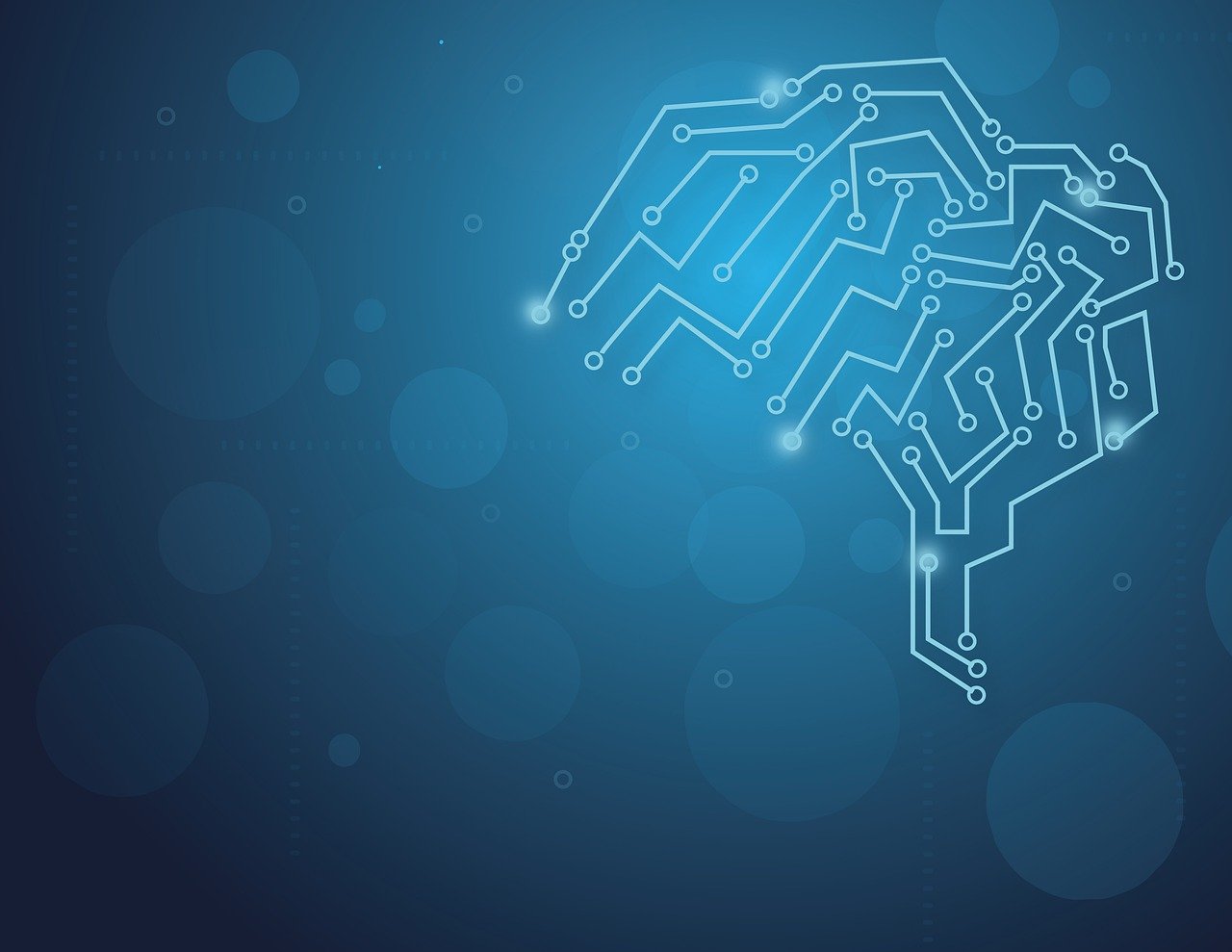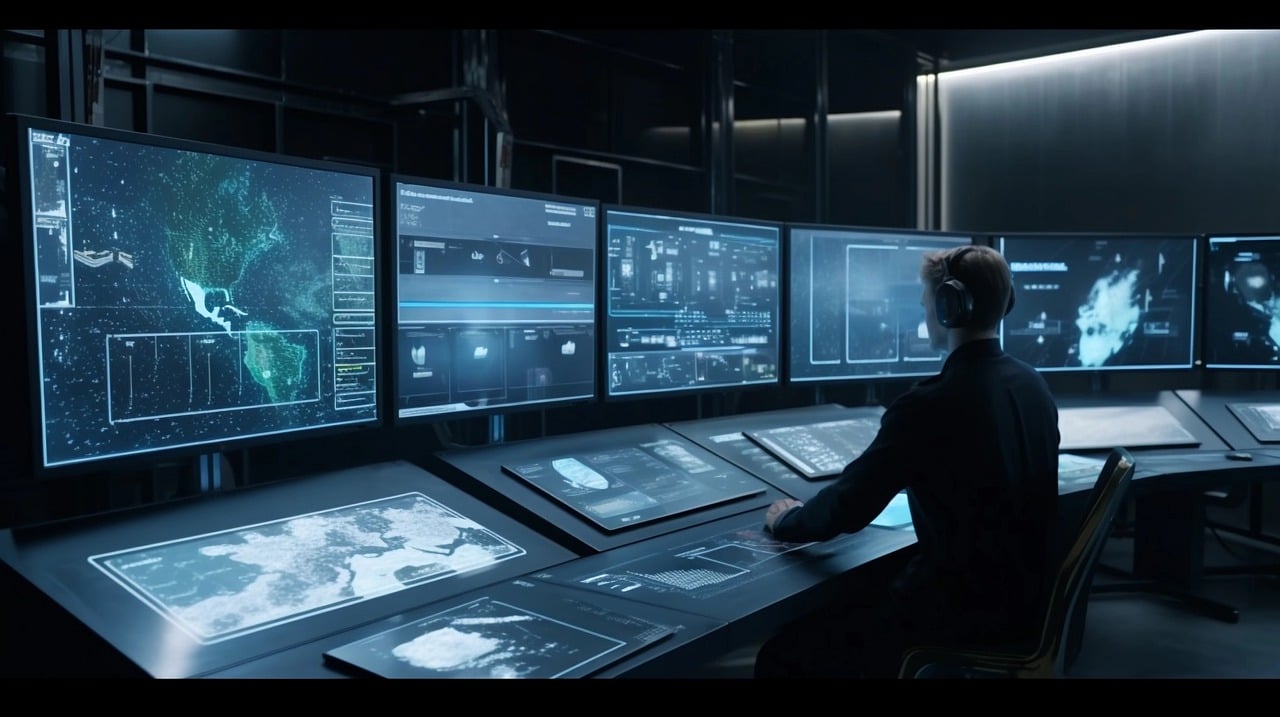How Advanced Defense Systems are Transforming Intelligence Operations
In today's fast-paced world, the landscape of intelligence operations is undergoing a seismic shift, largely driven by the advent of advanced defense systems. These systems are not just enhancing traditional methods; they are fundamentally transforming how nations gather, analyze, and act on intelligence. Imagine a world where data flows seamlessly, threats are identified in real-time, and decision-makers have access to unparalleled insights—all thanks to cutting-edge technologies. This article delves into the myriad ways these advancements are reshaping the intelligence community, highlighting technological innovations, strategic advantages, and the future of defense and security.
The journey of defense technologies is a fascinating tale of innovation and adaptation. From the rudimentary tools of ancient warfare to today's sophisticated systems, each milestone has played a crucial role in shaping modern intelligence operations. For instance, the introduction of radar technology during World War II revolutionized air defense, while the Cold War saw the rise of satellite reconnaissance. Fast forward to today, and we see a convergence of technologies such as artificial intelligence, machine learning, and big data analytics that are now integral to military strategies. The integration of these advanced systems not only enhances operational efficiency but also provides a strategic edge in intelligence gathering and analysis.
Artificial intelligence (AI) is at the forefront of revolutionizing intelligence gathering processes. Its ability to analyze vast amounts of data quickly and accurately is a game changer. Imagine having a virtual assistant that can sift through millions of data points, identify patterns, and provide actionable insights within seconds. AI enhances data analysis by automating routine tasks, allowing human analysts to focus on more complex decision-making processes. This not only improves the speed of intelligence operations but also significantly reduces the margin for error. As AI continues to evolve, its role in defense environments will only become more pronounced, paving the way for smarter and more responsive intelligence operations.
In an era where cyber threats are increasingly sophisticated, advanced defense systems are paramount for bolstering cybersecurity. The stakes are high; a single successful cyber attack can compromise sensitive information and disrupt critical infrastructure. Therefore, innovative measures such as intrusion detection systems, encryption technologies, and multi-factor authentication are essential for protecting national security. Organizations are now leveraging advanced analytics to monitor network traffic in real-time, identifying anomalies that could indicate a potential threat. This proactive approach not only safeguards data but also enhances the overall resilience of defense systems against cyber adversaries.
The role of data analytics in intelligence operations cannot be overstated. With the explosion of data generated by various sources, advanced systems are now equipped to process this information efficiently. By utilizing sophisticated algorithms, these systems can filter through vast datasets, enabling timely and accurate intelligence for strategic decision-making. For example, predictive analytics can forecast potential threats based on historical data and current trends, allowing defense agencies to act preemptively. This capability not only enhances operational effectiveness but also ensures that decision-makers are armed with the most relevant information at all times.
Unmanned systems, including drones and autonomous vehicles, have transformed surveillance capabilities in military operations. These technologies offer unparalleled operational advantages, such as the ability to conduct reconnaissance missions in high-risk areas without putting human lives at risk. Drones equipped with high-resolution cameras can gather intelligence over vast areas, providing real-time situational awareness. Moreover, the integration of AI in these systems enables them to operate autonomously, making decisions based on pre-programmed criteria and real-time data. As these technologies continue to advance, their role in enhancing military operations will only expand.
For defense operations to be effective, interoperability among various systems is crucial. This means that different technologies must be able to communicate and work together seamlessly. However, achieving this can be challenging due to the diverse nature of defense systems employed by different nations. Solutions such as standardized protocols and collaborative training exercises are essential for overcoming these challenges. By fostering interoperability, military alliances can enhance their collective operational capabilities, ensuring a more coordinated response to global threats.
As we look to the future, several emerging trends in defense technology promise to shape the landscape of intelligence operations. Innovations such as quantum computing, biometric identification, and advanced robotics are on the horizon, each with the potential to redefine how intelligence is gathered and processed. Quantum computing, for instance, could revolutionize data encryption and processing speeds, making it nearly impossible for adversaries to breach secure communications. Similarly, advancements in biometric technology could enhance security protocols, ensuring that only authorized personnel have access to sensitive information.
The deployment of advanced defense systems brings forth a host of ethical questions. As technology becomes more integrated into intelligence operations, it is imperative to address the moral implications of its use. Issues such as privacy, accountability, and the potential for misuse must be carefully considered. Establishing ethical guidelines is essential to ensure that these technologies are used responsibly and do not infringe on individual rights or international norms. By fostering a culture of ethical awareness, defense organizations can navigate the complex landscape of modern warfare while upholding fundamental values.
Real-world examples of successful implementations of advanced defense systems provide valuable insights into their effectiveness. For instance, the use of AI-driven analytics in the U.S. military has led to significant improvements in threat detection and response times. Similarly, countries that have integrated drone technology into their surveillance operations have reported enhanced situational awareness and operational efficiency. These case studies not only showcase the capabilities of advanced systems but also highlight the lessons learned, paving the way for future innovations in intelligence operations.
- What are advanced defense systems?
Advanced defense systems refer to the latest technologies and methodologies used in military operations, including AI, drones, and cybersecurity measures. - How does AI improve intelligence gathering?
AI enhances intelligence gathering by automating data analysis, improving accuracy, and enabling quicker decision-making. - What role do unmanned systems play in surveillance?
Unmanned systems, such as drones, provide real-time intelligence without risking human lives and can cover large areas efficiently. - Why is interoperability important in defense?
Interoperability ensures that different defense systems can work together effectively, enhancing overall operational capabilities.

The Evolution of Defense Technologies
The landscape of defense technologies has undergone a remarkable transformation over the decades, reflecting the dynamic nature of global security challenges. From the rudimentary tools of warfare in ancient times to the sophisticated systems we see today, the evolution of these technologies has been driven by a need for greater efficiency, accuracy, and effectiveness in military operations. Historically, each major conflict has catalyzed technological advancements. For instance, the World Wars saw the introduction of mechanized warfare, radar, and early computers, which fundamentally changed how battles were fought and won.
As we ventured into the Cold War era, the race for technological superiority intensified. The development of nuclear weapons and intercontinental ballistic missiles (ICBMs) marked a significant leap in defense capabilities, introducing a new dimension of deterrence. This period also saw the emergence of advanced reconnaissance technologies, including satellites and aerial drones, which enhanced intelligence-gathering capabilities. The integration of these systems into military strategies has allowed nations to monitor adversaries more closely and respond to threats with unprecedented precision.
In recent years, the rapid advancement of digital technology has further revolutionized defense systems. The introduction of artificial intelligence (AI) and machine learning has transformed how data is analyzed and utilized in intelligence operations. These technologies enable defense forces to process vast amounts of information quickly, identify patterns, and make informed decisions in real-time. Moreover, the rise of cybersecurity measures has become paramount, as adversaries increasingly target critical infrastructure and sensitive data through cyber attacks.
To illustrate the evolution of defense technologies, consider the following table that summarizes key milestones:
| Era | Key Developments |
|---|---|
| Ancient Times | Basic weapons (swords, bows), fortifications |
| World Wars | Mechanized warfare, radar, early computers |
| Cold War | Nuclear weapons, ICBMs, reconnaissance satellites |
| Modern Era | AI, machine learning, advanced cybersecurity |
Today, advanced defense systems are not just about firepower; they encompass a broad spectrum of technologies that include unmanned aerial vehicles (UAVs), cybersecurity frameworks, and sophisticated data analytics. Each of these components plays a critical role in shaping the operational capabilities of military forces worldwide. In essence, the evolution of defense technologies reflects a continuous adaptation to the changing nature of threats and the relentless pursuit of strategic advantages.
As we look to the future, it is clear that the pace of innovation will only accelerate. Emerging technologies, such as quantum computing and biotechnology, are poised to redefine the boundaries of what is possible in defense operations. The integration of these advancements will not only enhance military effectiveness but also raise new questions about the ethical implications of their use in intelligence operations.
In summary, the evolution of defense technologies has been a fascinating journey marked by significant milestones that have shaped modern military strategies. As we continue to navigate complex security landscapes, understanding this evolution is crucial for anticipating future developments and ensuring that defense systems remain effective and relevant.

Artificial Intelligence in Intelligence Gathering
Artificial Intelligence (AI) is not just a buzzword; it’s a game changer in the realm of intelligence gathering. Imagine having a super-smart assistant that can analyze mountains of data in mere seconds—sounds like science fiction, right? But this is the reality we’re living in today. AI technologies are revolutionizing how intelligence agencies operate, enabling them to sift through vast amounts of information to extract critical insights. With the sheer volume of data generated daily, traditional methods of analysis simply can’t keep up. This is where AI steps in, acting as a powerful ally in decision-making processes.
One of the most significant advantages of AI in intelligence gathering is its ability to enhance data analysis. By employing machine learning algorithms, AI systems can identify patterns and anomalies that would take human analysts much longer to detect. For instance, consider a scenario where intelligence agencies are monitoring social media for potential threats. An AI system can quickly analyze posts, comments, and interactions, flagging unusual patterns that may indicate a brewing crisis. This capability not only speeds up the response time but also increases the accuracy of the intelligence gathered.
Moreover, AI can improve decision-making by providing predictive analytics. Imagine being able to forecast potential threats before they materialize—this is the power of AI. By analyzing historical data and current trends, AI can help military strategists anticipate enemy actions or identify vulnerable points in national security. The ability to make informed decisions based on predictive insights can be the difference between thwarting a threat and facing a crisis. In military terms, it’s akin to having a crystal ball that provides a glimpse into the future.
Additionally, AI streamlines operations in defense environments. With automated systems handling routine tasks, human analysts can focus on more complex issues that require critical thinking and creativity. For example, AI can automate the process of data collection from various sources, such as satellite imagery, signals intelligence, and human intelligence. This not only saves time but also ensures that analysts have access to the most up-to-date information, allowing them to make timely decisions.
However, the integration of AI into intelligence operations is not without its challenges. Concerns regarding data privacy and ethical implications arise, especially when AI systems are used to monitor citizens. The balance between national security and individual rights is a delicate one, and it requires careful consideration. As we embrace these advanced technologies, it’s crucial to establish guidelines that govern their use, ensuring that they enhance our security without compromising our values.
In conclusion, the role of AI in intelligence gathering is transformative. As we continue to explore the capabilities of this technology, it’s essential to remain vigilant about the ethical implications and strive for a future where AI serves as a tool for good. The potential is immense, and with the right approach, AI can significantly enhance our intelligence operations, making the world a safer place.
- What is AI's role in intelligence gathering? AI enhances data analysis, improves decision-making, and streamlines operations, allowing intelligence agencies to process and analyze vast amounts of data quickly.
- How does AI improve decision-making in defense? AI provides predictive analytics that help strategists anticipate potential threats by analyzing historical data and current trends.
- What are the ethical concerns surrounding AI in intelligence? The use of AI raises questions about data privacy and the balance between national security and individual rights, necessitating the establishment of ethical guidelines.

Cybersecurity Enhancements
In today's digital age, where information is the new gold, the importance of cannot be overstated. As defense systems evolve, they are increasingly becoming targets for cyber attacks that can disrupt operations and compromise sensitive data. The stakes are high, and the need for advanced protective measures has never been more critical. Imagine a fortress equipped not just with walls but also with an intelligent system that can detect and neutralize threats in real-time. That's the kind of innovation we are seeing in the realm of cybersecurity.
One of the most significant advancements in cybersecurity is the use of machine learning algorithms. These algorithms analyze vast amounts of data to identify patterns that may indicate a cyber threat. By employing predictive analytics, defense systems can anticipate potential breaches before they occur. This proactive approach is akin to having a security guard who not only reacts to intrusions but also predicts where the next threat might come from. The ability to learn from past incidents and adapt is what sets these advanced systems apart.
Moreover, the integration of multi-layered security protocols has become a cornerstone of modern cybersecurity strategies. These protocols create a robust defense mechanism that includes firewalls, intrusion detection systems, and encryption technologies. Each layer acts as a barrier, making it significantly harder for cybercriminals to penetrate the system. For instance, if one layer is compromised, the subsequent layers can still protect sensitive information, much like a series of locked doors that require multiple keys to access the treasure inside.
Furthermore, organizations are increasingly adopting zero-trust security models. This approach operates on the principle that no one, whether inside or outside the organization, should be trusted by default. Every access request is verified, and users must authenticate themselves continuously. This method significantly reduces the risk of insider threats and unauthorized access, ensuring that even if a breach occurs, the damage can be contained. It's like having a bouncer at a club who checks IDs at every entry point, not just at the door.
To illustrate the effectiveness of these cybersecurity enhancements, consider the following table that outlines some key technologies and their roles in defense cybersecurity:
| Technology | Role in Cybersecurity |
|---|---|
| Machine Learning | Identifies and predicts potential threats through data analysis. |
| Multi-layered Security | Provides various barriers to protect sensitive information. |
| Zero-Trust Model | Ensures continuous verification of users to prevent unauthorized access. |
| Encryption | Secures data by converting it into unreadable code for unauthorized users. |
As we move forward, the landscape of cybersecurity will continue to evolve. New threats will emerge, and the defense systems must adapt to counter these challenges effectively. Collaboration between governments, private sectors, and cybersecurity experts is essential to develop comprehensive strategies that protect national security interests. It's a team effort, where sharing information and resources can lead to stronger defenses against the ever-changing tactics of cyber adversaries.
In conclusion, the enhancements in cybersecurity are not just about technology; they are about creating a culture of security awareness and vigilance. As we embrace these advancements, we must also remain cognizant of the ethical implications and the potential for misuse. The balance between security and privacy will be a critical discussion as we forge ahead into a future where cybersecurity is integral to our defense strategies.
- What are the main threats to cybersecurity in defense systems? Cyber threats can include malware, phishing attacks, ransomware, and insider threats.
- How does machine learning improve cybersecurity? Machine learning helps identify and predict potential threats by analyzing data patterns.
- What is a zero-trust security model? A zero-trust model requires continuous verification of users, assuming that no one should be trusted by default.
- Why is collaboration important in cybersecurity? Collaboration helps share information and resources, leading to stronger defenses against cyber threats.

Data Analytics and Intelligence Processing
In today's fast-paced world, the sheer volume of data generated is nothing short of staggering. From social media interactions to satellite imagery, the amount of information available for analysis is overwhelming. This is where data analytics comes into play, revolutionizing the way intelligence operations are conducted. Imagine trying to find a needle in a haystack; now, imagine that haystack is made of millions of needles. This is the challenge that defense agencies face, and advanced analytics tools are the key to sifting through this immense data landscape.
At the heart of effective intelligence processing lies the ability to transform raw data into actionable insights. With the advent of sophisticated algorithms and machine learning techniques, analysts can now process vast amounts of information in real-time. This capability allows for timely decision-making, which is crucial in defense scenarios where seconds can mean the difference between success and failure. For instance, advanced analytics can identify patterns and trends that human analysts might miss, thereby enhancing situational awareness and operational readiness.
Moreover, the integration of data analytics in intelligence processing is not just about speed; it's also about accuracy. By utilizing predictive analytics, defense organizations can forecast potential threats and assess risks more effectively. These tools can analyze historical data and current trends to predict future events, enabling military leaders to make informed decisions based on solid evidence rather than intuition alone. This shift towards data-driven decision-making is akin to moving from a guessing game to a chess match, where every move is calculated and strategic.
To illustrate the impact of data analytics, consider the following table that outlines key benefits:
| Benefit | Description |
|---|---|
| Enhanced Decision-Making | Real-time data analysis leads to informed decisions based on concrete evidence. |
| Increased Operational Efficiency | Automation of data processing reduces time spent on manual analysis. |
| Improved Threat Detection | Advanced algorithms identify potential threats before they escalate. |
| Resource Optimization | Data analytics helps allocate resources effectively, minimizing waste. |
Furthermore, the role of data analytics extends beyond just military applications. It also plays a significant part in humanitarian missions, disaster response, and global security initiatives. For example, during natural disasters, data analytics can help coordinate relief efforts by analyzing real-time data on affected areas, thus ensuring aid reaches those in need swiftly and efficiently. It's a powerful reminder that data, when harnessed correctly, can save lives and enhance global security.
In conclusion, the integration of data analytics into intelligence processing is not merely a trend; it is a transformative approach that is reshaping the landscape of defense operations. As technology continues to evolve, we can expect even more innovative solutions that will further enhance our ability to process and analyze data. In a world where information is power, those who can wield it effectively will undoubtedly hold the advantage.
- What is data analytics in intelligence operations?
Data analytics refers to the techniques and tools used to analyze and interpret vast amounts of data to derive actionable insights for decision-making in intelligence operations.
- How does data analytics improve decision-making?
By providing real-time insights and identifying patterns in data, analytics allows military leaders to make informed decisions based on solid evidence rather than intuition.
- What are some challenges of implementing data analytics in defense?
Challenges include data privacy concerns, the need for skilled personnel, and integrating analytics tools with existing systems.

Unmanned Systems in Surveillance
In recent years, unmanned systems, particularly drones and autonomous vehicles, have revolutionized the way surveillance is conducted in military operations. Imagine having eyes in the sky that can monitor vast areas without putting human lives at risk. This is not just a futuristic dream; it is a reality that is reshaping intelligence operations. These systems provide a level of operational advantage that traditional methods simply cannot match.
One of the most significant benefits of unmanned systems in surveillance is their ability to gather real-time data from areas that are otherwise difficult or dangerous to access. For instance, in conflict zones, drones can fly over hostile territories, providing critical intelligence without risking the lives of soldiers. This capability allows for better situational awareness, enabling military leaders to make informed decisions quickly. Furthermore, these systems can be equipped with advanced sensors and cameras, allowing them to capture high-resolution images and video, which can be analyzed for actionable intelligence.
Moreover, the integration of artificial intelligence into unmanned systems enhances their effectiveness. AI algorithms can process the data collected by these systems, identifying patterns and anomalies that a human analyst might miss. This not only speeds up the data analysis process but also increases the accuracy of the intelligence gathered. Imagine a drone that can autonomously navigate through a complex environment, avoiding obstacles while simultaneously scanning for potential threats. This level of sophistication is becoming increasingly common and is a game-changer in surveillance operations.
However, the use of unmanned systems in surveillance is not without challenges. There are significant ethical and legal considerations that must be addressed. For example, the potential for invasion of privacy raises questions about the boundaries of surveillance. Additionally, the reliance on technology may lead to overconfidence in automated systems, potentially resulting in critical oversights. It is essential for military organizations to establish clear guidelines and regulations governing the use of these systems to ensure that they are used responsibly and effectively.
In summary, unmanned systems are transforming the landscape of surveillance in military operations. They provide unparalleled advantages in terms of safety, data collection, and analysis. As these technologies continue to evolve, they will undoubtedly play an increasingly pivotal role in shaping the future of intelligence operations. The potential is immense, but it must be harnessed with caution and responsibility to navigate the complex ethical landscape that accompanies such powerful tools.
- What are unmanned systems? Unmanned systems refer to vehicles and devices that operate without a human pilot on board, such as drones and autonomous ground vehicles.
- How do unmanned systems enhance surveillance? They provide real-time data collection, can access hard-to-reach areas, and utilize advanced sensors for better intelligence gathering.
- What are the ethical concerns related to unmanned surveillance? Issues include privacy invasion, accountability for actions taken by autonomous systems, and the potential for misuse of surveillance data.

Interoperability of Defense Systems
In the ever-evolving landscape of modern warfare, the has emerged as a critical factor for success. Imagine a vast orchestra where each musician plays a different instrument, yet they all create a harmonious melody together. This is akin to how various defense systems need to work in unison, despite their differences in technology and design. The ability for these systems to communicate and operate seamlessly is not just a technical challenge; it is a strategic necessity that can determine the outcome of missions.
Historically, military operations have often been hampered by the inability of different systems to share information effectively. For instance, if one branch of the military uses a specific software for reconnaissance while another uses a completely different platform for analysis, the result can be a chaotic information flow that leads to delayed decisions and missed opportunities. To counter this, defense organizations are increasingly focusing on creating standards and protocols that allow for better integration. This effort is not merely about technology; it involves fostering a culture of collaboration among various military branches and allied nations.
One of the primary challenges in achieving interoperability is the diversity of technologies employed by different forces. As nations invest in advanced defense systems, the disparity in platforms can create significant hurdles. For example, consider the following table that outlines some of the key factors affecting interoperability:
| Factor | Description |
|---|---|
| Technology Standards | Different nations may use varying technical standards, making it difficult to share data. |
| Communication Protocols | Incompatibility in communication protocols can hinder real-time data exchange. |
| Cultural Differences | Varied military cultures can affect collaboration and understanding of operational goals. |
| Resource Allocation | Limited resources may impede the ability to upgrade systems for better compatibility. |
To address these challenges, many defense forces are investing in joint exercises and training programs that emphasize interoperability. These initiatives not only enhance technical skills but also build trust and camaraderie among allied forces. For example, multinational training exercises simulate real-world scenarios where different systems must work together, allowing personnel to experience the complexities of interoperability firsthand.
Moreover, technological advancements such as cloud computing and data-sharing platforms are paving the way for improved interoperability. By adopting a more unified approach to data management, defense systems can access and analyze information from various sources, leading to faster and more informed decision-making. The integration of Artificial Intelligence (AI) further enhances this capability, enabling systems to learn and adapt to new information in real-time.
As we look to the future, the importance of interoperability cannot be overstated. With the rise of hybrid warfare and the increasing complexity of global threats, defense systems must be able to operate together effectively. This not only ensures operational success but also helps to foster international cooperation and peacekeeping efforts. In a world where threats are ever-present, the ability to collaborate and share intelligence across borders is more crucial than ever.
In conclusion, the interoperability of defense systems represents both a challenge and an opportunity. By investing in technology, training, and collaboration, military forces around the globe can enhance their operational effectiveness and ensure that they are prepared to face the multifaceted threats of the future.
- What is interoperability in defense systems?
Interoperability refers to the ability of different defense systems to communicate and operate together effectively, regardless of their individual technologies or platforms. - Why is interoperability important?
It is crucial for ensuring that military operations can be conducted smoothly and efficiently, especially in joint missions involving multiple countries or branches of the armed forces. - What challenges exist in achieving interoperability?
Challenges include differing technology standards, communication protocols, cultural differences, and resource allocation issues. - How can interoperability be improved?
Improvement can be achieved through joint training exercises, standardization of protocols, and leveraging modern technologies like cloud computing and AI.

Future Trends in Defense Technology
As we look towards the horizon, the landscape of defense technology is evolving at an unprecedented pace. The integration of cutting-edge innovations is not just a trend; it’s a revolution that is reshaping how military and intelligence operations are conducted. With advancements in areas like quantum computing, robotics, and biotechnology, the future of defense is poised for dramatic transformations that will redefine strategic capabilities.
One of the most exciting developments on the horizon is the rise of quantum technologies. Quantum computing has the potential to process information at speeds and efficiencies that far surpass current capabilities. Imagine a world where complex simulations and cryptographic algorithms can be solved in mere seconds, providing military leaders with real-time insights and strategies that were previously unimaginable. This leap in computational power could significantly enhance data analysis in intelligence operations, leading to quicker and more informed decision-making.
Moreover, the integration of artificial intelligence (AI) is not only a current trend but will continue to expand its influence in the future. AI is expected to become more sophisticated, enabling systems to learn and adapt to new threats autonomously. This could lead to the development of autonomous defense systems that can operate independently, conducting surveillance, reconnaissance, and even combat missions without human intervention. However, this also brings forth challenges regarding accountability and the ethical implications of machines making life-and-death decisions.
In addition to AI, the advancement of unmanned systems is set to revolutionize military operations. Drones and autonomous vehicles are becoming increasingly capable, with improved sensors and AI integration that allow for enhanced situational awareness. The future will likely see a more extensive deployment of these systems in various roles, from logistics to combat, thereby reducing human risk and increasing operational efficiency. The ability to deploy unmanned systems in hostile environments opens up new strategic possibilities, allowing for missions that were previously deemed too dangerous.
Furthermore, the cyber domain will continue to be a battleground for defense technology. As cyber threats become more sophisticated, so too must our defenses. The future will see an emphasis on cyber resilience, where systems are not only designed to repel attacks but also to recover quickly from breaches. Innovative cybersecurity measures, such as blockchain technology for secure communications and data integrity, will play a critical role in protecting sensitive information and ensuring operational continuity.
As we embrace these advancements, it’s crucial to consider the interoperability of defense systems. With multiple nations collaborating on joint operations, the ability for different technologies to communicate and work together seamlessly is paramount. Future trends will likely focus on developing standards and protocols that facilitate this interoperability, ensuring that allied forces can operate as a cohesive unit, regardless of the technology they employ.
Lastly, the ethical considerations surrounding these advanced technologies cannot be overlooked. As we push the boundaries of what is possible, it is essential to establish ethical guidelines that govern the use of such technologies in defense. Questions about privacy, accountability, and the moral implications of autonomous systems must be addressed proactively to ensure that the advancements we make serve humanity positively and justly.
In summary, the future of defense technology is not just about enhancing capabilities; it’s about reimagining how we approach security and intelligence operations. With innovations in quantum computing, AI, unmanned systems, and cybersecurity, we stand on the brink of a new era. However, as we forge ahead, we must remain vigilant about the ethical implications and strive for a future where technology serves as a force for good.
- What role will quantum computing play in future defense technology? Quantum computing will significantly enhance data processing capabilities, allowing for real-time insights and improved decision-making in intelligence operations.
- How is AI expected to change military operations? AI will enable the development of autonomous systems capable of conducting missions independently, thereby increasing operational efficiency and reducing human risk.
- What are the ethical concerns surrounding advanced defense technologies? Ethical concerns include accountability for autonomous decisions, potential invasions of privacy, and the moral implications of using advanced technologies in warfare.

Ethical Considerations in Advanced Defense
The deployment of advanced defense systems has sparked a heated debate about the ethical implications of using technology in intelligence operations. As we embrace innovations like artificial intelligence, drones, and sophisticated data analytics, we must also grapple with the moral dilemmas that arise from their use. Are we crossing a line in our pursuit of security? How do we balance the need for safety with the potential for misuse of power?
One major concern is the autonomy of weapon systems. As machines increasingly make decisions without human intervention, the risk of unintended consequences grows. Imagine a scenario where an autonomous drone misidentifies a target and carries out an attack—who is held accountable? This uncertainty raises profound questions about responsibility and oversight. The challenge lies in ensuring that there are stringent guidelines governing the use of such technologies, to prevent ethical breaches that could lead to loss of innocent lives.
Another critical aspect is the issue of privacy. With enhanced surveillance capabilities, there’s a fine line between ensuring national security and infringing on individual rights. The ability to collect vast amounts of data on citizens can lead to a surveillance state, where personal freedoms are compromised. As we integrate advanced systems into our defense strategies, we must ask ourselves: How can we protect our citizens while also safeguarding their privacy? Establishing transparent policies and robust legal frameworks is essential to navigate this complex landscape.
Moreover, the use of artificial intelligence in intelligence gathering raises ethical questions about bias and discrimination. If the algorithms that analyze data are flawed or biased, they can lead to inaccurate conclusions and potentially harmful actions. It’s crucial that developers and operators of these systems prioritize fairness and accountability, ensuring that the technology serves all communities equitably.
To address these ethical considerations, it’s imperative for governments, military leaders, and technology developers to collaborate in creating a comprehensive ethical framework. This framework should include:
- Clear guidelines for the use of autonomous systems.
- Regular audits of AI algorithms to mitigate bias.
- Transparency measures to inform the public about data collection practices.
- Accountability structures for actions taken by advanced systems.
In conclusion, while advanced defense systems hold the promise of enhancing national security and operational efficiency, we must remain vigilant about the ethical implications of their use. By fostering an environment of dialogue and establishing robust ethical guidelines, we can ensure that these technologies are used responsibly, ultimately serving to protect both our nations and our values.
Q1: What are the main ethical concerns regarding advanced defense systems?
A1: The primary concerns include the autonomy of weapon systems, privacy issues related to surveillance, and the potential for bias in artificial intelligence algorithms.
Q2: How can we ensure accountability for autonomous systems?
A2: Establishing clear guidelines and accountability structures is essential. It is important to define who is responsible for the actions taken by autonomous systems and to conduct regular audits.
Q3: What role does public transparency play in the ethical use of defense technologies?
A3: Transparency helps to build trust between the government and the public. Informing citizens about data collection practices and the use of surveillance technologies is crucial for maintaining civil liberties.

Case Studies of Successful Implementations
In the rapidly evolving landscape of defense technology, case studies serve as crucial indicators of how advanced defense systems can enhance intelligence operations. These real-world examples not only showcase the effectiveness of new technologies but also provide valuable insights into the challenges and successes encountered during their implementation. One notable case study is the integration of unmanned aerial vehicles (UAVs) in the military operations of the United States. The use of drones has transformed reconnaissance missions, allowing for real-time data collection while minimizing risks to personnel. In one operation, UAVs successfully identified and tracked high-value targets in hostile territories, leading to precise strikes without endangering ground troops.
Another compelling example comes from the cybersecurity domain. The NATO alliance has adopted advanced defense systems that utilize artificial intelligence for cyber threat detection. By analyzing network traffic in real-time, these systems can identify anomalies and potential breaches before they escalate into significant threats. A recent exercise demonstrated that AI-driven analytics could reduce incident response times by over 30%, showcasing the profound impact of technology on operational efficiency.
Moreover, the integration of data analytics into intelligence operations has proven to be transformative. A case study involving the United Kingdom's Ministry of Defence revealed that by leveraging big data analytics, they could process vast amounts of information from diverse sources, including satellite imagery and social media feeds. This capability allowed for more accurate threat assessments and timely decision-making, ultimately enhancing national security. The results were clear: the ability to synthesize and analyze data quickly led to a more agile response to emerging threats.
Furthermore, the interoperability of defense systems has been tested in joint military exercises among allied nations. A recent NATO exercise highlighted how different countries could seamlessly share intelligence and coordinate operations using advanced communication technologies. This level of cooperation is vital for addressing global threats, demonstrating that the future of defense relies heavily on collaborative efforts. The exercise not only showcased technological advancements but also emphasized the importance of building trust and understanding among allied forces.
To sum up, these case studies illustrate how advanced defense systems are not just theoretical concepts but practical tools that significantly enhance intelligence operations. They highlight the effectiveness of integrating new technologies, the importance of real-time data analysis, and the necessity of interoperability among allied forces. As we continue to explore the potential of these systems, it becomes evident that the future of defense is not only about innovation but also about collaboration and strategic implementation.
- What are advanced defense systems? Advanced defense systems refer to cutting-edge technologies and methodologies used in military operations to enhance intelligence gathering, cybersecurity, and operational efficiency.
- How do UAVs improve intelligence operations? UAVs, or drones, provide real-time surveillance and reconnaissance capabilities, allowing for data collection without risking personnel in hostile environments.
- What role does AI play in cybersecurity? AI enhances cybersecurity by analyzing network traffic and identifying potential threats in real-time, significantly improving incident response times.
- Why is interoperability important in defense? Interoperability ensures that different defense systems can work together seamlessly, which is crucial for effective collaboration among allied nations during joint operations.
Frequently Asked Questions
- What are advanced defense systems?
Advanced defense systems refer to cutting-edge technologies and methodologies utilized in military operations to enhance intelligence gathering, data analysis, and operational efficiency. These systems incorporate artificial intelligence, cybersecurity measures, unmanned vehicles, and more to provide strategic advantages on the battlefield.
- How does artificial intelligence enhance intelligence operations?
Artificial intelligence (AI) significantly improves intelligence operations by automating data analysis, identifying patterns, and providing actionable insights. AI systems can process vast amounts of data quickly, allowing decision-makers to respond promptly to emerging threats and streamline operations effectively.
- What role does cybersecurity play in advanced defense systems?
Cybersecurity is crucial in advanced defense systems as it protects sensitive information and infrastructure from cyber threats. With the increasing frequency of cyber attacks, these systems employ innovative technologies and strategies to safeguard military operations and maintain national security.
- What are the benefits of unmanned systems in military surveillance?
Unmanned systems, such as drones and autonomous vehicles, offer several operational advantages in surveillance, including real-time data collection, reduced risk to personnel, and enhanced situational awareness. These systems can operate in challenging environments, providing critical intelligence without putting human lives at risk.
- Why is interoperability important in defense systems?
Interoperability among various defense systems is essential for effective military operations, especially in joint missions. It ensures that different technologies and platforms can communicate and work together seamlessly, enhancing coordination and overall mission success.
- What future trends are expected in defense technology?
Future trends in defense technology include advancements in AI, increased automation, improved cybersecurity measures, and the integration of new technologies like quantum computing. These innovations will continue to transform intelligence operations and enhance military capabilities globally.
- What ethical considerations arise from using advanced defense systems?
The deployment of advanced defense systems raises several ethical questions, such as the implications of autonomous decision-making in military operations and the potential for misuse of technology. Establishing ethical guidelines is crucial to ensure responsible use and to address moral concerns related to warfare and intelligence gathering.
- Can you provide examples of successful implementations of advanced defense systems?
Several case studies illustrate the successful implementation of advanced defense systems, showcasing their effectiveness in real-world scenarios. These examples highlight lessons learned and best practices that can inform future military strategies and technology integration.



















